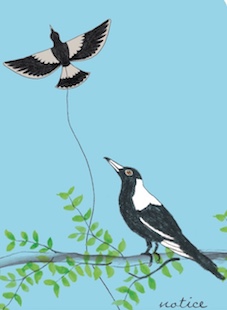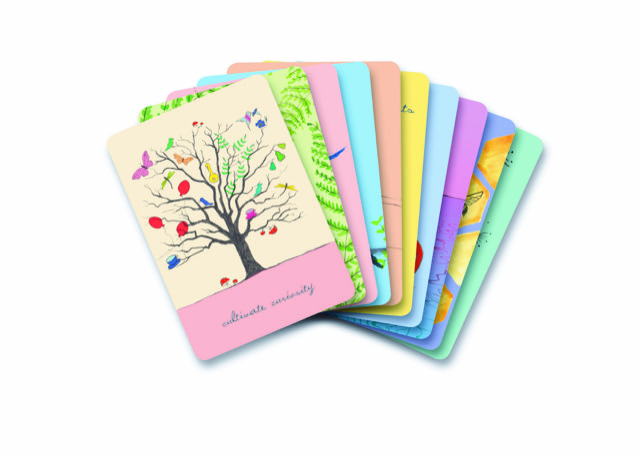“Out beyond ideas of wrong-doing
and right-doing, there is a field.
I'll meet you there.”
― Rumi
I started writing this post about a month ago and it has taken an unusually (agonisingly) long time to complete. In fact it is not complete. Blogs should ideally be short, to the point and accessible. This one isn’t. Each time I have returned to it, I have felt much more like I was writing a journal article than a blog post!
It’s too long.
The solution to my dilemma came to me today. Break it up. Take your time. Allow some space in between. So, here’s part 1.
And it’s still too long.
Sorry.
One of the most persistent criticisms of inquiry-based approaches is that learners are insufficiently supported because teachers, so the argument goes, expect them to ‘go and find out’ with minimal guidance. This argument depicts the inquiry teacher as a warm but arms-length, non-interventionist ‘guide on the side’ who is little more than a ‘\resource person’\.
I have said this many times before but it can’t hurt to say it again. When understood well, inquiry learning actually demands careful design of authentic learning experiences, attention to existing schema, deft questioning, ongoing assessment, the cultivation of curiosity and the ability to plan and teach through concepts. The teacher’s role is critical. Even when experiences are planned to allow open exploration (while teachers observe and document) the work is highly intentional. Nevertheless, both the image of inquiry as a kind of ‘free for all’ methodology and the criticism of its effectiveness prevail. In this series of posts, I want to address some of this criticism: not in defence, but rather to consider what we can learn from it.
So – let me first lay my rather obvious cards on the table. Thirty-five years of teaching combined with the wisdom of many great minds in education leave me in no doubt about the power of inquiry. I have seen time and time again the potent effect of valuing learner’s questions, the gains in understanding when we support the learner to do the heavy lifting, the palpable thrill of ‘figuring out’ and the capacity for children to take their learning SO much further and deeper when unnecessary teacher-imposed restrictions are removed. I am regularly astonished at the way learning erupts when the learner is curious and hungry to find out. I have seen learner agency beautifully demonstrated when teachers allow learners take action about big ideas that matter to them. It is also easy for me to cite numerous examples of research that supports the approach (see for example, Hmelo-Silver, C., Duncan, R., & Chinn, C. (2007) or Barron, B., & Darling-Hammond, L. (2008), Friesen & Scott, 2013.) There are plentiful studies arguing the case for a more learner and learning centred approach to contemporary curriculum. Our curriculum here in Australia identifies inquiry skills as integral to several learning areas and this is echoed in programs and curricula around the world (PYP, The new Curriculum of British Columbia, the New Curriculum in Wales, The NZ Curriculumn to name just a few).
I could comfortably stay in an echo chamber of theorists and practitioners who think what I think and believe what I believe…but…
…I also know the dangers of doing this. I know that my passion for this approach to teaching and learning must not blind me to its pitfalls. I know that to develop deep understanding depth about a concept I need to be able to view it with an open mind and from multiple perspectives. (Somewhat ironically, that is one of the underpinning principles of inquiry learning itself.)
So, that’s what I have been doing lately – re-visiting research that contends inquiry is ineffective. And in the spirit of Rumi’s famous call to meet in the space between right and wrong, I offer my thoughts on what we can learn from those who argue the case against inquiry learning.
Each time I re-read this work, I find that my points of difference are more a matter of emphasis rather than conflict. Polarised views are rampant in education (whole language vs phonics being one of the most obvious) but ultimately unhelpful. Holding extreme views, refusing to acknowledge some validity in positions very different to one’s own simply stifles dialogue and ultimately prevents all of us from moving forward. I’ve always been much more interested in dialogue than diatribe.
The bulk of the criticism of the effectiveness of inquiry learning centres around its lack of sufficient support for learners, the absence of clear intentions and the need for more explicit teaching. Of the research that suggests inquiry learning is ineffective, two fields interest me in particular. One is around cognitive load theory (see, for example,, Kirschner, Sweller & Clark 2006). The second is related work on episodic vs semantic memory (see a useful discussion on this at https://www.educationnext.org/best-way-to-help-children-remember-things-not-memorable-experiences-excerpt/)
What is the essence of this research? At the risk of oversimplification and acknowledging I am far from an expert in the field of cognitive science…and because this is a blog post not an academic article, I offer the following:
Cognitive Load Theory is a way of explaining brain’s processing of information and the transfer of information from working memory to long term memory. Working memory is vulnerable to overload and this overload can compromise learning. This research suggests that learning experiences need to be designed in ways that reduce the strain on working memory to promote schema construction for deeper, long term understanding. Related research into memory ‘types’ while taking a different tack, arrives at a similar conclusion to that found in discussions of CLT. Episodic memory is a kind of ‘autobiographical’ memory – linked to sensory experiences and emotion. We might, for example, remember laughing at an hilarious joke someone told us a week ago…we remember that moment, but possibly not the joke itself. We remember ‘episodes’ in our lives relatively easily. Remembering is, of course, not necessarily knowing. Semantic memory, on the other hand, refers to the facts, concepts and understandings we have stored in our long term memory and no longer context bound. Unlike remembering what you had for breakfast this morning, semantic memory needs work and is potentially more robust : “the deliberate building of semantic memory is much more likely to result in long lasting, flexible and transferable memory.”
The work on cognitive load and memory types draw similar conclusions about the ineffectiveness of problem solving or inquiry – particularly in the early stages of learning about something. Much of this criticism is based on a definition of inquiry as involving little or no teacher instruction or guidance. If teachers truly understand the critical nature of their role in an inquiry classroom then I believe we actually have more in common with this research than we might think. So this remains an important point to make. When people claim inquiry learning is ineffective, it is important to ask: What do you mean by inquiry learning? If the definition emphasises minimal guidance and suggests learners are expected to simply ‘go it alone’ then for the most part, I am inclined to agree (with some caveats I’ll discuss next time)
Rather than spend any more time analysing definitions and explaining the research itself (this is a blog post after all – I may have already lost you!!) I want to share some of the ways it helps inform my practice as a dedicated inquiry-based teacher. In other words, what can I learn from those who have a different view? Over the years, as I listen to dissenting voices I have learned to ask myself:
What is it about my thinking/being that is resisting this work? Why?
Where do we have thinking in common?
What is resonating with me most strongly?
What am I doing that actually aligns with this work? (as it turns out, more than you might expect)
How is this helping clarify or bring into focus the principles that underpin inquiry?
What new questions does this raise for me? What am I curious about?
In parts #2 and #3 I will share the lessons I have learned from those who argue against inquiry as an effective approach….they have taught me a lot
Stay tuned and keep wondering….





